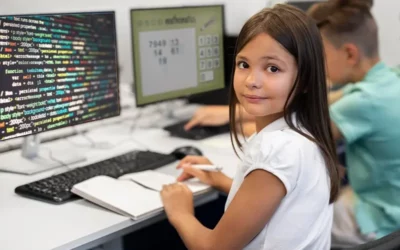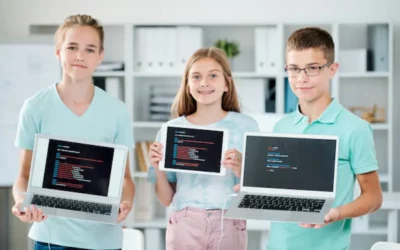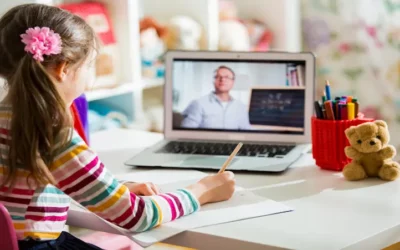In today’s rapidly advancing technological landscape, programming has become an essential skill that empowers individuals to thrive in the digital age. As a parent, you have the opportunity to pave the way for your child’s future success by enrolling them in programming classes. By doing so, you are providing them with a solid foundation in problem-solving, critical thinking, and creativity that will have far-reaching benefits.
Programming classes offer your child the chance to develop a growth mindset. They learn to break down complex problems into smaller, manageable tasks, fostering a systematic approach to finding solutions. This ability to analyze and tackle challenges will serve them well in any field they choose to pursue, as problem-solving skills are universally valuable.
Table of contents
Introduction
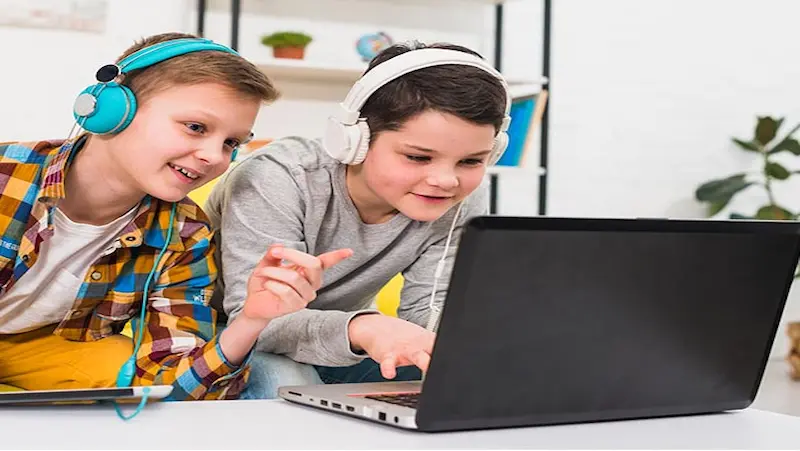
In today’s digital age, it is more important than ever for children to learn how to code. Coding is a valuable skill that can open up a world of possibilities for them, both in their academic and professional careers.
There are many benefits to learning programming at a young age. Coding can help children develop problem-solving skills, critical thinking skills, and creativity. It can also help them learn how to work independently and as part of a team.
In addition to these academic benefits, coding can also help children develop valuable life skills such as perseverance, resilience, and confidence. When children learn to code, they learn that they can solve problems and achieve their goals through hard work and dedication. This can give them a sense of accomplishment and boost their self-esteem.
If you are interested in empowering your child’s future with programming classes, there are many options available. There are online coding programs, after-school coding clubs, and even some elementary schools that offer coding classes.
When choosing a coding program for your child, it is important to consider their age, interests, and learning style. There are programs that are designed for children of all ages, from preschool to high school. There are also programs that focus on different aspects of coding, such as game development, web design, or robotics.
The most important thing is to find a program that your child will enjoy and that will challenge them. With the right program, your child can learn valuable skills that will benefit them for years to come.
Benefits of Learning Programming at a Young Age
There are many benefits to learning programming at a young age. Some of the most important benefits include:
- Problem-solving skills: Coding teaches children how to break down problems into smaller steps and solve them using logic and creativity. This is a valuable skill that can be applied to all areas of life, from school to work to everyday challenges.
- Critical thinking skills: Coding requires children to think critically about problems and come up with creative solutions. This skill is essential for success in any field, but it is especially important in today’s ever-changing world.
- Creativity: Coding allows children to express their creativity in new and innovative ways. They can design games, create websites, and build robots using their own ideas. This can help them develop a sense of ownership and pride in their work.
- Collaboration skills: Coding is often a collaborative activity, which requires children to work together to achieve a common goal. This can help them develop important teamwork and communication skills.
- Self-confidence: When children learn to code, they achieve a sense of accomplishment that can boost their self-esteem. They learn that they can solve problems and achieve their goals through hard work and dedication.
These are just a few of the many benefits of learning programming at a young age. If you are interested in giving your child a head start in life, consider enrolling them in a coding program.
Types of Programming Classes for Kids

There are many different types of coding classes for kids, each with its own pros and cons. In-person classes offer the opportunity for kids to interact with other students and a teacher in a real-time setting. This can be helpful for kids who learn best by doing and who need extra help or support. Online classes offer flexibility and convenience, as kids can learn at their own pace and from the comfort of their own home. Hybrid classes combine the best of both worlds, offering in-person instruction with the flexibility of online learning.
In-Person Classes
In-person coding classes are typically held at local libraries, community centers, or schools. These classes are led by a certified teacher who can provide one-on-one instruction and help kids troubleshoot any problems they may encounter. In-person classes can be a great way for kids to meet other kids who are interested in coding and to build a community of learners. However, in-person classes can be more expensive than online classes and may not be available in all areas.
Online Classes
Online coding classes are offered by a variety of companies, including Codecademy, Khan Academy, and Udemy. These classes are typically self-paced, which means that kids can learn at their own pace and on their own time. Online coding classes for kids can be a great option for kids who are shy or who prefer to learn independently. However, online classes can be more challenging for kids who need extra help or support.
Hybrid Classes
Hybrid coding classes combine the best of both in-person and online classes. These classes are typically held at a local location for a few hours each week, and the rest of the instruction is done online. Hybrid classes can be a great option for kids who want the flexibility of online learning with the support of a live teacher. However, hybrid classes can be more expensive than in-person or online classes.
Choosing the Right Programming Classes for Your Child
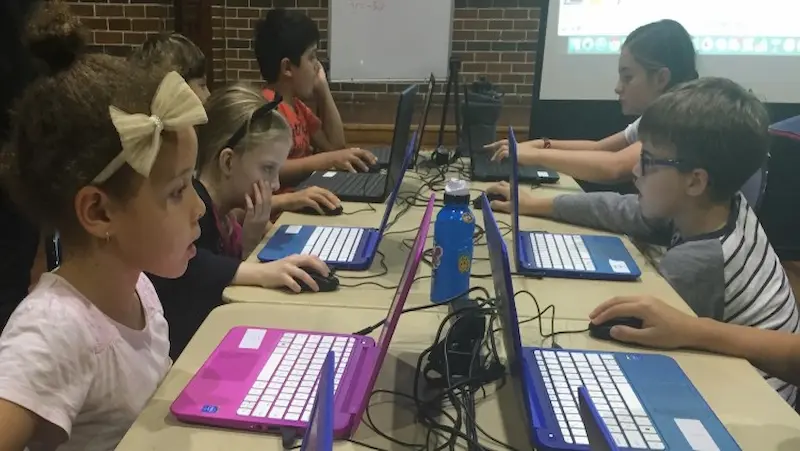
Here are some tips on choosing the right programming classes for your child:
- Consider your child’s age and interests. There are many different coding languages and platforms, and not all of them are appropriate for every age group. Some languages, such as Scratch coding for kids, are designed for younger children, while others, such as Python, are more appropriate for older children and teens. It’s also important to consider your child’s interests. If they’re interested in creating games, for example, you might want to look for a class that teaches them how to use a game engine like Unity or Unreal Engine.
- Find a class that fits your child’s learning style. Some children learn best by doing, while others learn best by listening to lectures. Some children prefer to work independently, while others prefer to work in groups. It’s important to find a class that accommodates your child’s learning style.
- Look for a class that has a good teacher. The teacher is one of the most important factors in your child’s learning experience. Make sure to find a class with a teacher who is experienced in teaching coding to children, and who is passionate about their subject.
- Ask around for recommendations. Talk to other parents who have enrolled their children in coding classes. They can give you valuable insights into the different programs available, and can recommend specific classes that they think would be a good fit for your child.
- Take a free trial class. Many coding schools offer free trial classes. This is a great way to see if the class is a good fit for your child, and to get a feel for the teacher and the teaching style.
Choosing the right programming classes for your child can be a daunting task, but it’s important to take the time to find a program that will help them learn and grow. By following these tips, you can find a class that will help your child develop the skills they need to succeed in the 21st century.
Here are some additional tips that may be helpful:
- Consider the cost of the classes. Coding classes can be expensive, so it’s important to factor in the cost when making your decision. There are some free and low-cost options available, but they may not be as comprehensive as more expensive programs.
- Think about the location of the classes. If you’re looking for in-person classes, you’ll need to find a program that’s convenient for your family. There are also many online coding classes available, which can be a great option if you have a busy schedule or live in a rural area.
- Don’t be afraid to ask questions. If you have any questions about the different coding classes available, don’t hesitate to contact the schools or programs directly. They’ll be happy to answer your questions and help you find the right program for your child.
Popular Programming Languages for Kids
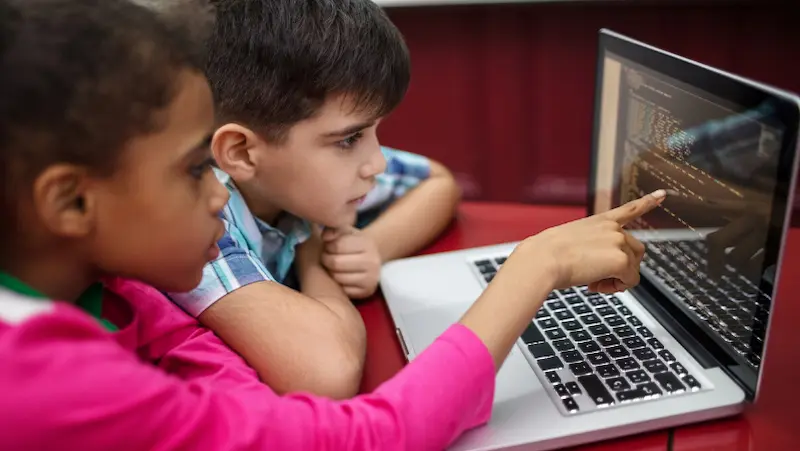
There are many popular programming languages for kids, each with its own advantages and disadvantages. Learning kids coding languages like Scratch or Python can be an exciting adventure for young learners. Here is a brief overview of four of the most popular languages:
Scratch
Scratch is a block-based programming language that is designed for kids of all ages. It is easy to learn and use, and it allows kids to create interactive animations, games, and stories. Scratch is a great way for kids to learn the basics of programming, and it can also help them develop their creativity and problem-solving skills.
Python
Python is a general-purpose programming language that is known for its simplicity and readability. It is a good choice for kids who are interested in learning a more traditional programming language. Python is also a popular language for data science and machine learning, so learning Python can give kids a head start on these in-demand fields.
Blockly
Blockly is a visual programming language that is similar to Scratch. It is designed for kids who are just starting to learn about programming, and it makes it easy to create simple programs by dragging and dropping blocks. Blockly is a great way for kids to learn the basics of programming without having to worry about syntax.
JavaScript
JavaScript is a scripting language that is used to create interactive web pages. It is a popular language for kids who are interested in web development. JavaScript is also a powerful language that can be used to create games, animations, and other applications.
Advantages and disadvantages of each language
Scratch
- Advantages:
- Easy to learn and use
- Promotes creativity and problem-solving skills
- Available for free online
- Disadvantages:
- Can be limiting for more advanced projects
- Not as powerful as some other programming languages
Python
- Advantages:
- Simple and readable syntax
- Wide range of applications
- Large community of users and resources
- Disadvantages:
- Not as visual as some other programming languages
- Can be difficult for beginners to learn
Blockly
- Advantages:
- Easy to learn and use
- Promotes creativity and problem-solving skills
- Available for free online
- Disadvantages:
- Not as powerful as some other programming languages
- Can be limiting for more advanced projects
JavaScript
- Advantages:
- Powerful language
- Wide range of applications
- Popular for web development
- Disadvantages:
- Can be difficult for beginners to learn
- Syntax can be complex
Which language is right for your child?
The best programming language for your child will depend on their age, interests, and learning style. If your child is just starting out, Scratch or Blockly are good options. These languages are easy to learn and use, and they can help kids develop their creativity and problem-solving skills. If your child is interested in web development, JavaScript is a good choice. JavaScript is a powerful language that can be used to create interactive web pages. As your child progresses, exploring various computer for kids resources can further enhance their coding journey. If your child is interested in more advanced topics, such as data science or machine learning, Python is a good option. Python is a simple and readable language that is widely used in these fields.
No matter which language you choose, the most important thing is to encourage your child to have fun and be creative. Programming can be a great way for kids to learn new skills, develop their problem-solving abilities, and express their creativity.
Careers in Programming for Kids
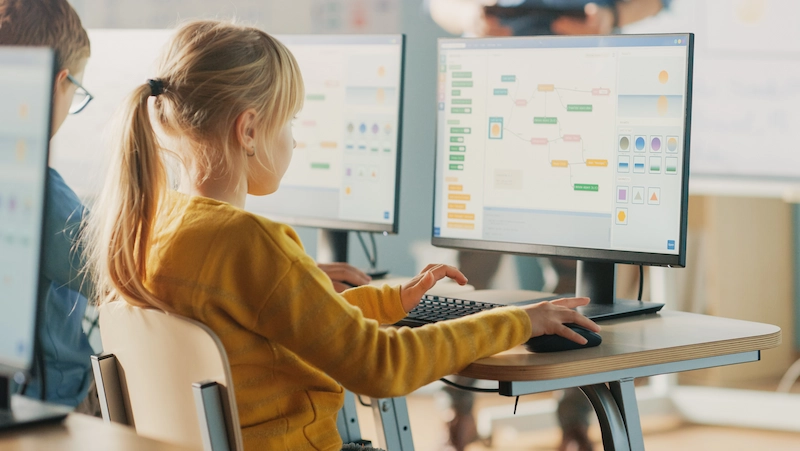
Programming is a skill that is in high demand and is only going to become more important in the future. There are many different careers that require programming skills, and kids who learn to code at a young age can have a leg up on the competition.
Here are a few of the many careers that are available to programmers:
- Software developer: Software developers are responsible for creating and maintaining software applications. They use programming languages to write code that tells computers what to do.
- Web developer: Web developers design and create websites. They use HTML, CSS, and JavaScript to create websites that are both functional and visually appealing.
- Game developer: Game developers create video games. They use programming languages to create the game’s mechanics, graphics, and sound.
- Data scientist: Data scientists use programming languages to analyze data. They use this data to make predictions, identify trends, and solve problems.
- Cybersecurity engineer: Cybersecurity engineers protect computer systems from cyberattacks. They use programming languages to create firewalls, intrusion detection systems, and other security measures.
These are just a few of the many careers that are available to programmers. The demand for programming skills is high, and the salaries are often very good, making it a promising path for those with coding proficiency. As kids explore coding and activities for kids, they may discover a passion that can lead to exciting and fulfilling career choices in the future.
Skills Needed for Programming
There are a few key skills that are essential for success in programming. These skills include:
- Problem-solving skills: Programmers need to be able to identify and solve problems. They need to be able to think logically and break down problems into smaller, more manageable steps.
- Critical thinking skills: Programmers need to be able to think critically about their code. They need to be able to identify potential problems and find ways to fix them.
- Communication skills: Programmers need to be able to communicate their ideas to others. They need to be able to write clear and concise code, and they need to be able to explain their code to others.
- Creativity: Programmers need to be creative. They need to be able to come up with new ideas and solutions to problems.
Successful Programmers Who Started Learning at a Young Age
There are many successful programmers who started learning programming at a young age. Here are a few examples:
- Bill Gates: Bill Gates started learning programming when he was 13 years old. He co-founded Microsoft, which is one of the most successful technology companies in the world.
- Mark Zuckerberg: Mark Zuckerberg started learning programming when he was 10 years old. He co-founded Facebook, which is one of the most popular social media platforms in the world.
- Steve Jobs: Steve Jobs started learning programming when he was 12 years old. He co-founded Apple, which is one of the most successful technology companies in the world.
These are just a few examples of successful programmers who started learning at a young age. If you are a kid who is interested in programming, there is no reason why you can’t be successful as well.
Encouragement for Kids to Consider Programming as a Future Career Option
Programming is a great career option for kids. It is a skill that is in high demand, and the salaries are often very good. If you are a kid who is interested in programming, including Python programming for kids, there are many resources available to help you learn. There are online courses, books, and even summer camps that teach kids how to code.
I encourage all kids who are interested in programming to consider it as a future career option. It is a rewarding career that can lead to a lot of success.
Resources for Parents and Kids
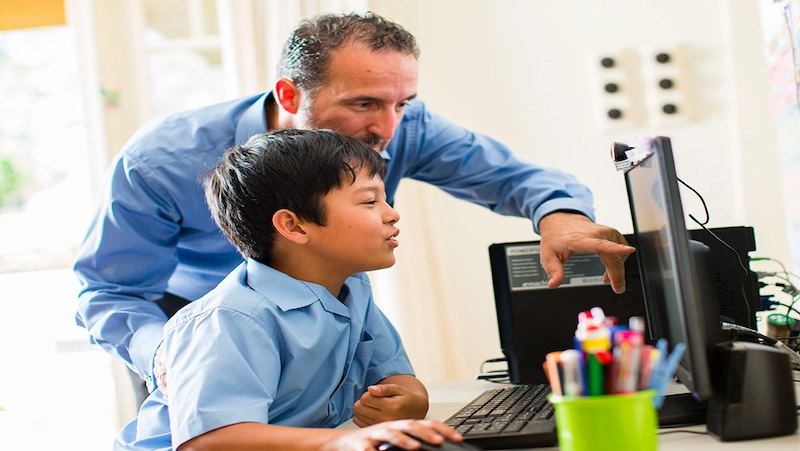
There are many resources available for parents and kids who want to continue learning programming outside of class. Here are a few of the best:
- Books: There are many great books available that teach kids the basics of programming. Some popular options include “ScratchJr: First Coding Adventures” by Mitchel Resnick, “Python for Kids: A Fun and Creative Introduction to Coding” by Bill Weinman, and “JavaScript for Kids: Learn to Code by Making Games” by Kyle Phillips.
- Websites: There are also many great free coding websites for kids that offer interactive coding tutorials and games. Some popular options include Code.org, Scratch, and Khan Academy.
- Coding camps: Coding camps are a great way for kids to learn coding in a fun and immersive environment. There are many different coding camps available, so it’s important to do your research to find one that’s a good fit for your child.
- Online courses: There are also many online courses available free coding for kids that teach kids how to code. Some popular options include Codecademy, Udemy, and Coursera.
- CodeChamps by BrightChamps is an extraordinary platform that ignites young minds with the power of coding. It is a creative wonderland where kids dive into the captivating world of programming, learning to unravel complex algorithms and craft their own digital masterpieces. The instructors are passionate mentors who guide young learners on an enchanting coding journey, unlocking their potential and shaping them into tech-savvy champions. CodeChamps is where dreams come alive, and the future of innovation takes flight.
Opportunities for Kids to Apply Their Programming Skills Through Competitions and Hackathons
In addition to learning the basics of programming, it’s also important for kids to have opportunities to apply their skills. There are many different ways to do this, including participating in competitions and hackathons.
- Competitions: There are many different coding competitions available for kids of all ages. Some popular options include the FIRST Robotics Competition, the World Robot Olympiad, and the Imagine Cup.
- Hackathons: Hackathons are events where people come together to build software projects in a short period of time. Hackathons are a great way for kids to learn new skills, meet new people, and build something cool.
Participating in competitions and hackathons can be a great way for kids to learn and grow as programmers. It can also be a lot of fun! Exploring computer programs for kids can prepare them for such events by providing skills and knowledge to excel in coding challenges and projects.
Conclusion
In conclusion, empowering your child’s future with programming classes is a decision that holds immense potential for their personal and professional growth. By equipping them with the necessary coding skills and knowledge, you are opening doors to a world of opportunities. Programming fosters critical thinking, problem-solving abilities, and creativity, all of which are highly sought after in today’s increasingly digital landscape. Moreover, as technology continues to shape various industries, proficiency in programming will become an essential skill in almost every field. By investing in programming classes for your child, you are setting them up for success, enabling them to adapt to an ever-evolving world and giving them a competitive edge in their future endeavors. So, don’t hesitate to empower your child with programming education and watch them thrive in a world where coding is a language of innovation and limitless possibilities.
Frequently Asked Questions
Coding classes are suitable for kids as young as 5 years old. There are many different coding programs available, and some are specifically designed for younger children. These programs use games, puzzles, and other interactive activities to teach kids the basics of coding.
Sure, here are some programming languages that are taught in programming classes for kids:
Scratch
Python
Java
JavaScript
C++
HTML
CSS
These languages are all relatively easy to learn and have a wide range of applications, making them ideal for young programmers.
Programming classes for kids typically last 1-2 hours per session, and there are usually 12-16 sessions in a course.
This is just a general guideline, as the length of the classes may vary depending on the specific program and the age of the children. However, this should give you a good idea of how much time is involved in learning to code.
Programming classes for kids can be taught in person or online. In-person classes offer the opportunity for students to interact with their peers and instructor in real time, while online classes offer flexibility and convenience. The best type of class for your child will depend on their individual learning style and preferences.
Kids in programming classes work on a variety of projects, from simple games to complex applications. They learn the basics of coding and how to apply it to real-world problems.
Here are some examples of projects that kids might work on in programming classes:
Create a simple game like a guessing game or a quiz.
Build a robot that can move and respond to commands.
Develop a website maker for kids or app.
Create a piece of digital art.
Analyze data using coding.
Solve coding challenges.
These are just a few examples of the many projects that kids can work on in programming classes. By participating in these projects, kids learn the basics of coding and how to apply it to real-world problems. They also develop critical thinking skills, problem-solving skills, and creativity.
Programming instructors for kids typically have a bachelor’s degree in computer science or a related field, as well as experience teaching children. They should be able to explain complex concepts in a way that is easy for kids to understand, and they should be able to create engaging and interactive learning experiences.
The student-to-teacher ratio in programming classes for kids varies depending on the program. However, a good rule of thumb is to look for a program with a ratio of 10:1 or less. This will ensure that each student gets the individual attention they need to succeed.
Make it fun, relevant, and hands-on. Kids are more likely to stay engaged in programming classes if they are having fun, learning something relevant to their interests, and are able to get their hands dirty.
Yes, kids with no prior programming experience can join programming classes. Most coding classes are designed for beginners and will teach the basics of programming from scratch. In fact, some experts believe that it is better for kids to learn to code without any prior experience, as this will allow them to learn the fundamentals in a more natural way.
Programming classes for kids typically cover the basics of coding, such as variables, loops, and functions. They may also teach students how to create their own games, best coding apps for kids developed by kids, and websites.
Here are some specific topics that are often covered in programming classes for kids:
Block-based coding: This is a visual programming language that uses blocks to represent code. It is a great way for kids to learn the basics of programming without having to worry about syntax.
Text-based coding: This is the most common type of coding, and it uses text to represent code. It is more complex than block-based coding, but it gives kids more control over their code.
Game development: This is a popular topic in programming classes for kids. Students learn how to create their own free computer games for kids developed by kids using a variety of programming languages and tools.
Web development: This is another popular topic in programming classes for kids. Students learn how to create their own websites using HTML, CSS, and JavaScript.

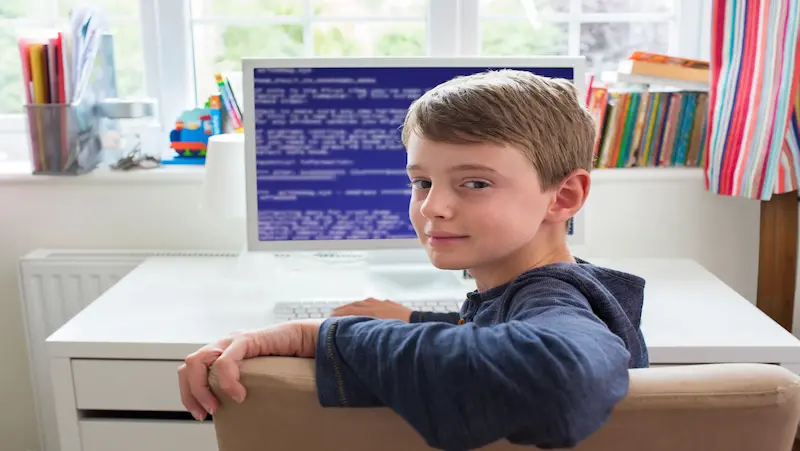
 We are an army of educators and passionate learners from BrightChamps family, committed to providing free learning resources to kids, parents & students.
We are an army of educators and passionate learners from BrightChamps family, committed to providing free learning resources to kids, parents & students.








